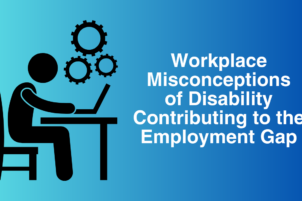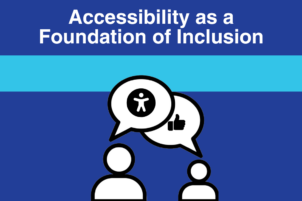Communication is essential to creating an inclusive and welcoming workplace and ensuring a seamless and collaborative accommodation process. In a webinar with the Job Accommodation Network (AskJAN), Disability Belongs™ shared key strategies and resources to help employers navigate accommodation discussions with confidence.
Reasonable accommodations help unlock employee potential, enhance workplace productivity, and support a diverse workforce. They also ensure compliance with Title I of the Americans with Disabilities Act (ADA) and similar laws, when applicable.
What is a “Reasonable” Accommodation?
A “reasonable” accommodation is a modification or adjustment to a job, work environment, or hiring process, that permits an applicant or employee with a disability to perform the essential job functions or access the same benefits and privileges as their non-disabled colleagues.
Building an Inclusive Accommodation Process
- Foster an inclusive and welcoming workplace where employees feel empowered to request the tools they need to succeed.
- Develop, implement, and communicate reasonable accommodation policies and procedures multiple times throughout the year.
- Make it easy to request and receive accommodations by keeping policies flexible, transparent, and simple to navigate.
- Train managers on creating inclusive environments, workplace personalization, and how to effectively manage accommodation requests.
Six Steps to Identifying and Implementing Solutions
Step 1: Recognizing an Accommodation Request
- An employee requests an accommodation to perform essential job functions.
- Tip: If you’re unsure whether an employee has requested an accommodation, ask, “How can I help?” This simple question fosters a safe space for disability disclosure.
Step 2: Gathering Information
- Engage in an open dialogue to understand the employee’s job-related needs and limitations.
- Tip: Avoid placing unnecessary burdens on the employee by requiring excessive medical documentation—this can deter requests for needed accommodations.
Step 3: Exploring Accommodation Options
- Work with the employee to identify technological solutions or potential modifications to their job, work environment, or schedule that could address the employee’s needs.
- Tip: Employees often know what works best for them. Keep the conversation collaborative.
Step 4: Choosing Accommodations
- Select accommodations that balance employee needs and workplace effectiveness.
- Tip: Some employees with disabilities may work with external partners who can provide support, funding, or equipment to facilitate accommodations.
Step 5: Implementing Accommodations
- Ensure clear expectations are set for both the employee and the employer, and necessary steps are taken for implementation.
- Tip: Inform essential personnel about accommodations when necessary, while maintaining confidentiality of personal health and disability information.
Step 6: Monitoring Accommodations
- Periodically evaluate and adjust accommodations as needed.
- Tip: Keep communication open and let employees know accommodations can be modified over time.
Communication Is Vital
- Collaborate to find solutions that benefit employees and the organization.
- Be transparent about policies and decisions related to accommodations.
- Communicate clearly so all parties understand expectations.
- Stay open-minded and be adaptable and creative, because accommodations are not one-size-fits-all.
- Be open to temporary or trial accommodations.
Do you want to create a more inclusive workplace? Disability Belongs™ offers training and partnership to help your organization build a culture where all employees can thrive.
Contact us to learn more: partners@disabilitybelongs.org






